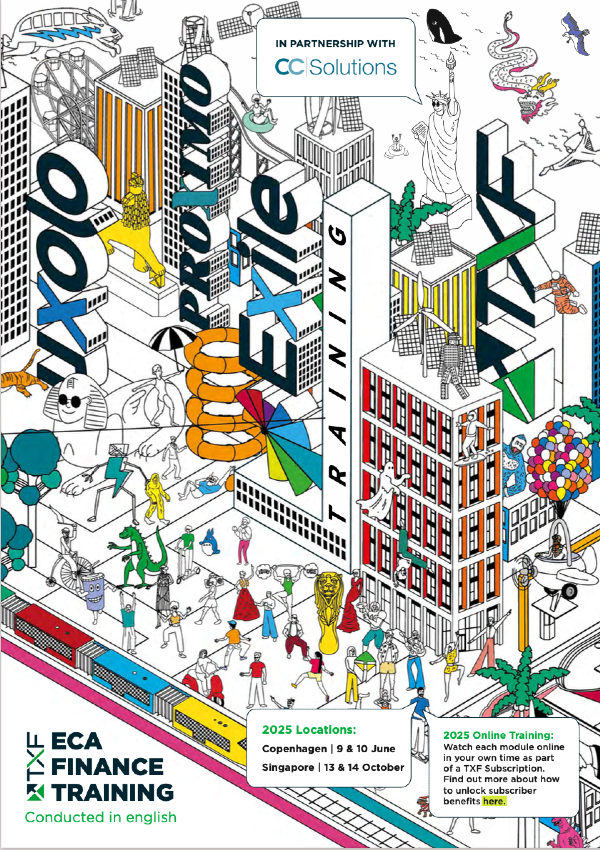Sponsored article: Narrowing the gap with Trade-Finance-as-a-Service
While trade finance has an essential role to play in supporting the global economy through the post-COVID recovery, many firms are still unable to access the finance they need. Fortunately, technology can help banks meet their customers’ trade finance needs – and with cloud-based solutions, the cost of a specialist system is no longer prohibitive for small and mid-sized banks, as Surecomp’s Enno-Burghard Weitzel and Andrew Coles explain.

The last 18 months have brought exceptional challenges – and when it comes to supporting companies and economies through the post-COVID-19 recovery, trade finance has a vital role to play. But while demand for trade finance continues to outweigh availability by a considerable margin, high transaction costs mean it is simply not viable for many smaller banks to provide customers with the trade finance they need. So why is trade finance technology so critical when it comes to narrowing the trade finance gap? And how can cloud-based solutions help small and mid-sized banks support their customers more effectively?
Trade finance and recovery
The impact of the pandemic on global trade has been substantial. Travel restrictions, factory shutdowns and lockdowns had a major impact on the supply of goods and services, with global trade falling by 8.9% in 2020. At the same time, shipping costs have increased significantly since the beginning of the pandemic – and a plethora of other issues, ranging from shortages of semiconductors and shipping containers to the infamous grounding of the Ever Given in the Suez Canal, have brought further disruption.
While challenges remain, this year has brought something of a recovery: trade volumes reached a record high in the first quarter of 2021, while Moody’s has predicted that global trade will grow by 7-9% in 2021. And with trade volumes bouncing back – albeit tentatively – trade finance is seen as a vital tool for supporting economic growth. In reality, however, not every company that needs trade finance is able to access it.
Before the pandemic, a report by the Asian Development Bank estimated the global trade finance gap to be $1.5 trillion, with small and medium sized enterprises (SMEs) particularly struggling to access trade finance. According to the report, 45% of trade finance applications by SMEs were rejected, compared to 17% for multinational corporations. Even without knowledge of the impending pandemic, 60% of responding banks said they expected the trade finance gap to increase in the following two years.
Many different measures have been adopted to address this shortfall, including regulatory reform, policies and technical initiatives. But while the global trade landscape may be complex, one of the major reasons for the trade finance gap is simple: in some cases, the cost of a trade finance transaction is larger than the value of the transaction itself. As a result, most of the world’s trade finance is provided by a small number of banks that have been able to achieve economies of scale and reduce their processing costs by harnessing technology. Smaller banks, in contrast, have struggled to achieve profitability in this area.
Falling behind
As we move through the crisis and beyond, it’s clear that trade finance has an important role to play in supporting economic recovery – and in order to close up the gap, banks need to embrace trade finance digitisation. With the right solutions in place, banks can offer a more streamlined digital experience, improve their workflows and reduce the cost of trade finance transactions. This, in turn, can help to increase trade activity and provide companies with the finance they need to do business.
For larger banks, and for dedicated trade finance banks, getting budgetary approval for purchasing a specialist solution is likely to be more straightforward. But for smaller and mid-sized banks with fewer financial and IT resources available to them, accessing the technology they need can be more difficult.
Trade finance margins are already under pressure, and growing compliance costs driven by the greater focus on AML and KYC mean that the cost of doing business is continuing to rise. As such, banks that have smaller volumes are likely to find it more challenging to build the business case needed to invest in a dedicated trade finance system. Purchasing such systems has historically meant spending millions of dollars on an on-premise solution, and implementing this type of solution tends to be very time consuming. The ongoing maintenance can also be very expensive for these heavy-duty deployments, which typically require a dedicated IT team to run both the software and the hardware.
All of this has tended to make specialist trade finance solutions out of reach for smaller banks that are often constrained by shrinking budgets, scarce IT resources and regulatory pressure. As a result, many of these smaller banks are using inefficient, manual tools such as spreadsheets and emails to handle their trade finance business – thereby reducing the profitability of their trade finance business.
Without access to technology that can reduce costs and increase efficiencies, banks may find it difficult to offer trade finance in a way that is economical. They may also struggle to scale up effectively, retain and attract customers, and provide the expected level of service needed in this competitive market.
These smaller banks may feel left behind if they are unable to act while their competitors go live with sophisticated new trade finance solutions – and the gap has become all the more significant during the pandemic. As the handling of digital documents became increasingly difficult during lockdowns, the adoption of digital alternatives has sped up considerably. As a result, smaller banks that continue to rely on manual processes and have not invested in a suitable digital platform may already be falling behind their more digitally enabled peers.
The way forward
Fortunately, technology is opening up new opportunities for smaller banks to access sophisticated trade finance solutions. Software-as-a-Service (SaaS) and cloud-based solutions have much to offer in this respect as they can free banks up from the burden of having to implement and maintain on-premise systems.
With a sophisticated cloud-based solution, the hefty upfront costs associated with traditional systems are replaced with a manageable monthly subscription fee. Cloud-based solutions also eliminate the need for internal IT support, and can significantly reduce the total cost of ownership (TCO) for specialist trade finance solutions. As such, cloud solutions have an important role to play in helping bank access the technology they need to support trade growth for their customers.
This approach can offer particular value to smaller banks that might otherwise be unable to access trade finance technology. Surecomp, for example, has recently expanded its Trade Finance-as-a-Service (TFaaS) offering to allow smaller and mid-sized banks to improve their trade finance processing efficiencies and customer service. Banks can now access our leading DOKA-NG™ trade finance solution as a fully cloud-based service for as little as $50,000 per year, meaning smaller banks can now harness the benefits of the world’s most widely adopted back-office solution.
Speed of deployment
While there are other SaaS-based solutions available, one of the most compelling differentiators of Surecomp’s offering is the speed at which banks can be up and running with the new solution. Integrating a back-office trade finance system with internal systems can take months, or even years. But by drawing upon decades of experience in the trade finance market, we are able to offer a much more streamlined deployment. In fact, we’ve made a commitment that banks will be able to start using the solution within just 10 weeks of starting the project – an implementation speed that is a game changer for smaller and mid-sized banks.
Once up and running, banks can use the TFaaS solution to streamline their workflows, speed up transaction processing, and increase their volume handling. Banks can use the solution to access everything from letters of credit, collections and loans to supply chain finance and syndications. They can also use the solution to connect to Surecomp’s API fintech marketplace, meaning they are able to access solutions and capabilities from over 30 different providers.
Last but not least, our TFaaS offering gives banks the agility they need to evolve and grow. For one thing, the solution enables banks to scale up as their transaction volumes increase by accessing additional modules, such as documentary collections or our front-office corporate facing solution. It also provides future-proof compliance with upcoming regulatory and market changes, such as SWIFT’s transition to ISO 20022 messaging. And banks can ensure they are fully up-to-date with the latest developments by taking advantage of monthly feature releases, without having to spend time on inconvenient upgrades.
What this means is that by using our TFaaS solution, small and mid-sized banks can reduce their IT reliance and cost of ownership by as much as 30-50%. As a result, many players in the industry can now access a system that allows them to embark on their digitisation journeys and better serve their corporate customers. As Santiago Cano, trade finance manager at Banco Pichincha at Ecuador, commented: “Moving to a cloud-based solution aligns with our digital-first strategic direction.”
Supporting the recovery
In conclusion, trade finance has a vitally important role to play in supporting the global economic recovery in the wake of the COVID-19 crisis. And while smaller and mid-sized banks have historically struggled to access the technology they need to make trade finance a viable option, the rise of streamlined cloud-based solutions means this is no longer the case. By taking advantage of a rapid implementation time, light infrastructure and subscription-based pricing model, smaller banks can operate more efficiently, reduce transaction costs – and ultimately offer customers access to the trade finance they need.
Sponsored article





